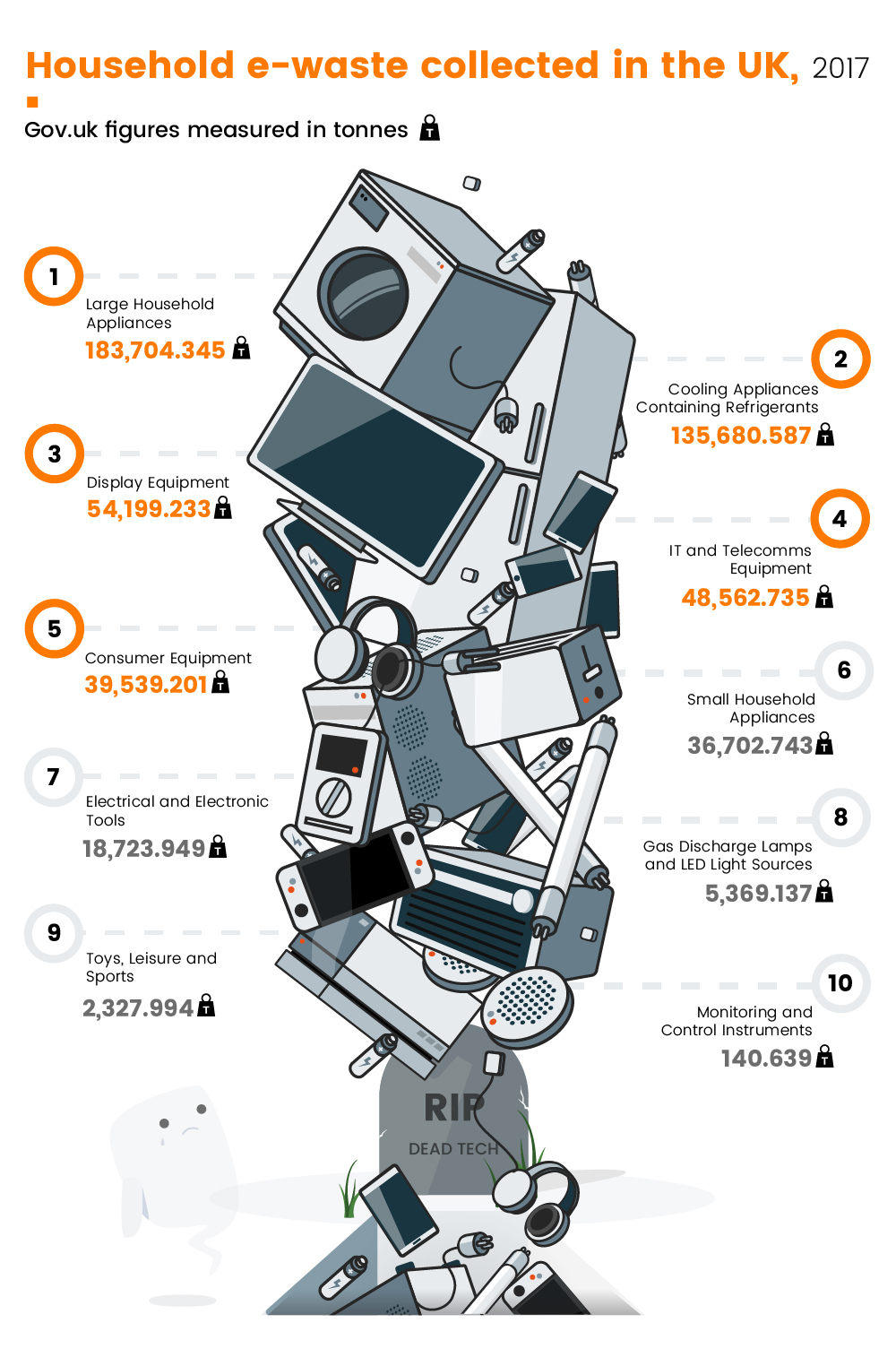Electronic waste to increase to 52.2mmt by 2021
Electronic waste - or ‘e-waste’ - refers to all items of electrical and electronic equipment and its parts that have been discarded by its owner as waste without the intent of reuse. Concerned that the amount of e-waste generated is expected to increase substantially over the next few decades, OnRecycle.co.uk delved deeper into the issue. They analysed 2018 data released by Gov.uk, concerning Waste Electrical and Electronic Equipment, which outlines the household e-waste collected in the UK throughout 2017.
It was found Large Household Appliances, such as a washing machine, accounted for most of the e-waste generated by households in the UK in 2017 – with an astounding 183,704.345t recovered.
Cooling Appliances Containing Refrigerants (135,680.587t) is the next highest figure, followed by Display Equipment – at 54,199.233t. IT and Telecom Equipment, such as landline telephones and satellites, came next (48,562.735t) and Consumer Equipment (such as headphones) closed the top five highest e-waste products recovered, at 39,539.201t.
Products with lesser quantities recorded, such as those under the umbrella of Toys, Leisure and Sports (2,327.994t) and Monitoring and Control Instruments (140.639t), continue to echo the notion we need to take more responsibility regarding how our e-waste is handled.
Cas Paton, managing director of OnRecycle, noted: “One of the key hazards of e-waste is its electronic components, which often contain toxins, such as lead, cadmium and mercury. For this reason, e-waste must be handled with the utmost care. This includes an appropriate method of recycling, refurbishment or disposal. Since most types of e-waste can be recycled effectively, it is not necessary to leave unwanted, electronic waste to gather dust in a dump. E-waste is dreadfully harmful to the environment and it prompts a very serious issue we must address.”
Wiseuptowaste.org.uk claimed the UK will contribute around 1mt of e-waste every year. This waste will contain valuable metals, as well as plastics and other materials that can be recovered by recycling accurately and then used to make new products.
For example, consumers in the UK purchase around 22.5m phones annually. These phones will contain nearly 1t of gold, more than 9t of silver and over 300t of copper. Fast-paced tech development, new upgrades and an abundance of exciting new products developed, will mean mobile phones that are only a couple of years old may play a part in the plentiful e-waste generated.
The Global E-Waste Monitor 2017 report suggests increasing levels of electronic waste, and its improper and unsafe treatment and disposal through open burning or in dumpsites, will pose significant risk to the environment and human health. It also presents several challenges to sustainable development.
The same report details, in 2016, 44.7mmt of e-waste were generated, globally. This is equivalent to almost 4,500 Eiffel Towers. Yet, just 8.9mt of e-waste was documented to be collected and recycled, which corresponds to as little as 20% of all e-waste generated. By 2021, it is expected e-waste will reach 52.2mt – an annual growth rate of 3-4%.








